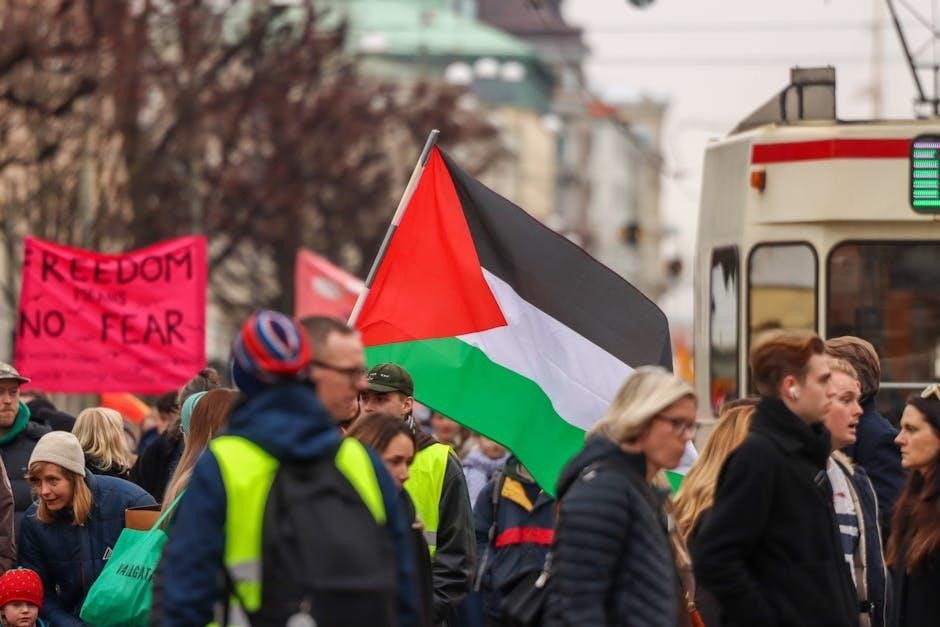
palestine by joe sacco pdf
Joe Sacco is a pioneering cartoonist-journalist, best known for his graphic novel Palestine, which offers a harrowing depiction of the Israeli-Palestinian conflict through personal stories and detailed visuals.
1.1. Who is Joe Sacco?
Joe Sacco is a renowned cartoonist and journalist, celebrated for his innovative approach to storytelling. Born in 1960 in Malta, he later moved to the United States, where he developed a passion for comics and journalism. Sacco’s work often explores complex political and social issues, blending meticulous research with personal narratives; His groundbreaking graphic novel Palestine (1993) earned him widespread acclaim, solidifying his reputation as a pioneer of comics journalism. Sacco’s unique style combines detailed visuals with intimate storytelling, offering readers a profound understanding of the human experience in conflict zones. Over the years, he has become a leading voice in the genre, inspiring countless creators to explore the intersection of art and journalism. His work continues to resonate globally, providing a vivid and unflinching look at the realities of war and displacement.
1.2. The Concept of Comics Journalism
Comics journalism, a term popularized by Joe Sacco’s work, refers to the fusion of graphic storytelling and investigative reporting. This innovative approach allows complex narratives to be presented in an accessible and engaging manner. Unlike traditional journalism, comics journalism leverages visuals to convey emotions and contexts that words alone might fail to capture. Sacco’s Palestine exemplifies this concept, using detailed illustrations and personal accounts to document life under occupation. By blending art and journalism, Sacco creates a deeply immersive experience, making the stories of marginalized communities resonate with a broader audience. This genre has since inspired other creators, proving that comics can be a powerful medium for exploring social and political issues with depth and sensitivity. Comics journalism bridges the gap between art and activism, offering a unique lens through which to view the world’s most pressing challenges.
1.3. The Significance of Palestine in Sacco’s Oeuvre
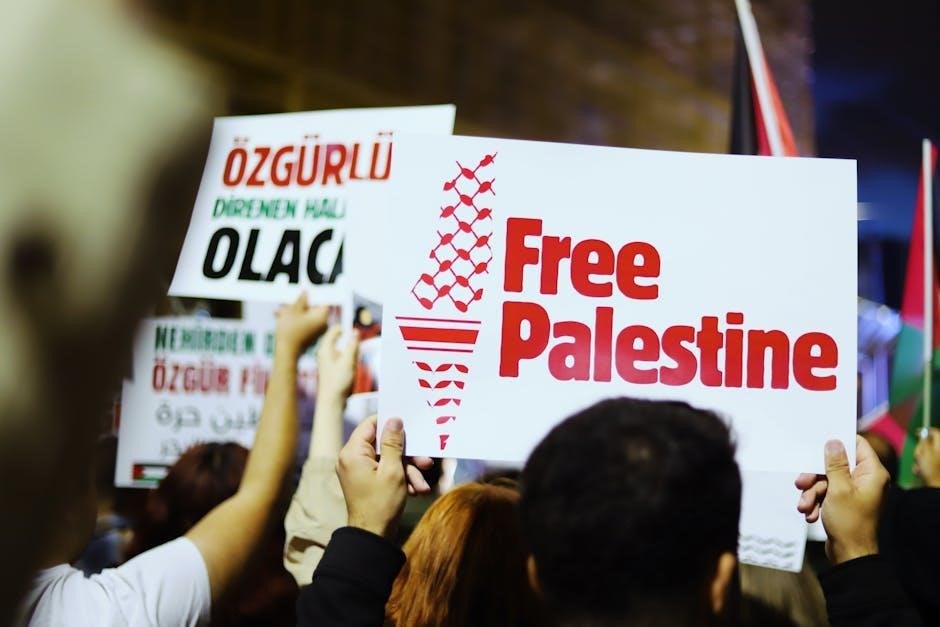
Palestine holds a central place in Joe Sacco’s body of work, marking a pivotal moment in his career as a cartoonist-journalist. The graphic novel, published in 1993, is widely regarded as a groundbreaking work that brought international attention to the Israeli-Palestinian conflict. Through its detailed and empathetic portrayal of Palestinian life under occupation, Palestine humanizes a narrative often overshadowed by political rhetoric; Sacco’s meticulous research and personal interactions with residents of the West Bank and Gaza Strip lend authenticity to the stories, making the book both a historical document and a deeply personal account. This work not only solidified Sacco’s reputation as a master of comics journalism but also sparked broader conversations about the role of comics in addressing global issues. Palestine remains a cornerstone of Sacco’s oeuvre, illustrating his commitment to giving voice to marginalized communities and challenging readers to engage with complex realities.
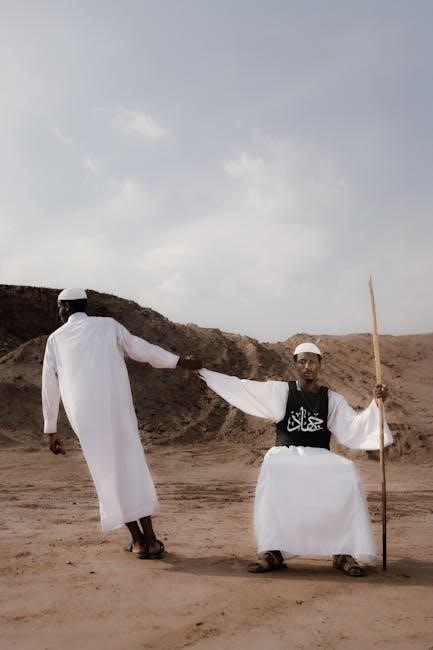
Historical Context of the Israeli-Palestinian Conflict
The Israeli-Palestinian conflict traces back to the 1948 establishment of Israel, leading to Palestinian displacement (Nakba) and ongoing territorial disputes over the West Bank and Gaza.
2.1. Overview of the Conflict
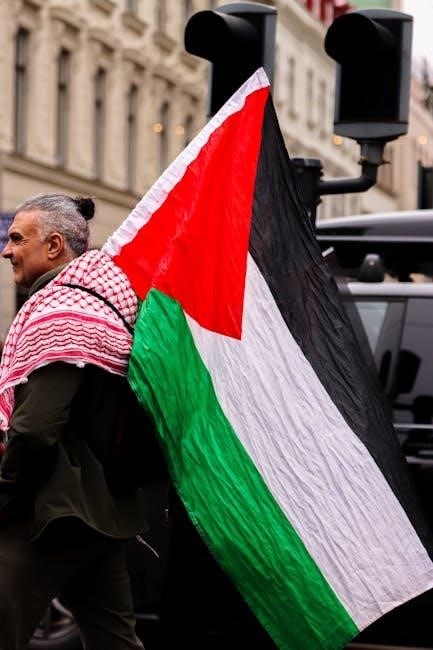
The Israeli-Palestinian conflict is a longstanding struggle rooted in competing claims to the same land. It began with the 1948 establishment of Israel, leading to the displacement of Palestinians, known as the Nakba or “catastrophe” in Arabic. This event set the stage for decades of violence, territorial disputes, and political tension. The conflict centers on issues such as Israeli settlements in the West Bank and Gaza, the status of Jerusalem, and the right of return for Palestinian refugees. Over the years, numerous attempts at peace negotiations have failed to resolve the conflict, resulting in recurring cycles of violence, including wars in Gaza and ongoing human rights issues. The conflict remains a central issue in Middle Eastern politics and continues to have global repercussions.
2.2. The First Intifada and Its Impact
The First Intifada, beginning in 1987 and lasting until 1993, was a grassroots Palestinian uprising against Israeli occupation. It involved mass protests, strikes, and civil disobedience, drawing global attention to the plight of Palestinians. Joe Sacco’s Palestine captures the daily struggles and resilience of those living under occupation during this period. The Intifada shifted international perception, highlighting the harsh realities of life in the Occupied Territories. It also led to significant political changes, including the emergence of the Palestine Liberation Organization as a negotiating partner. The uprising resulted in a high human cost, with many casualties and widespread imprisonment. Sacco’s work vividly portrays the emotional and physical toll on Palestinians, offering a personal and humanizing perspective on the conflict. The First Intifada remains a pivotal moment in the Israeli-Palestinian conflict, shaping both the struggle for Palestinian self-determination and the broader discourse on Middle Eastern politics.
2.3. The Role of Palestine in Shaping Public Perception
Joe Sacco’s Palestine has played a crucial role in shaping public perception of the Israeli-Palestinian conflict. By presenting personal narratives and vivid visuals, the book humanizes Palestinians, countering stereotypes often perpetuated in mainstream media. Sacco’s graphic novel offers a nuanced exploration of life under occupation, highlighting daily struggles and resilience. This approach has made the conflict more relatable to readers worldwide, fostering empathy and understanding. The book’s impact extends beyond traditional journalism, as its visual storytelling reaches audiences who might not engage with conventional news reports. By centering Palestinian voices, Sacco’s work challenges dominant narratives, encouraging readers to question their assumptions about the conflict. As a result, Palestine has become a significant resource for those seeking a deeper understanding of the Israeli-Palestinian issue, influencing public discourse and advocacy efforts globally.
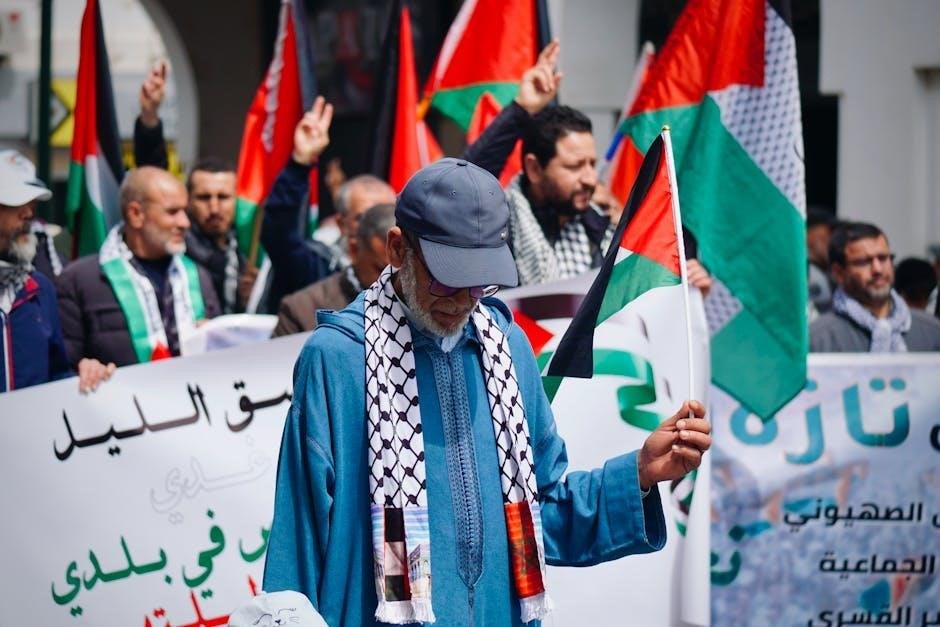
Themes and Narrative Style in Palestine
Joe Sacco’s Palestine explores themes of daily life under occupation and resilience through vivid visuals and personal narratives. His unique narrative style blends journalism with comic art, humanizing the conflict.
3.1. The Portrayal of Daily Life in Palestine
Joe Sacco’s Palestine vividly captures the everyday struggles of life under occupation. Through detailed illustrations and personal anecdotes, Sacco portrays the resilience and humanity of Palestinians facing harsh conditions. His work highlights the impact of checkpoints, home demolitions, and economic hardship on ordinary people, offering a deeply personal and nuanced perspective. By documenting the mundane yet oppressive aspects of daily existence, Sacco humanizes the conflict, making it relatable to readers unfamiliar with the realities of life in the Occupied Territories. His approach emphasizes the dignity and strength of individuals amidst systemic oppression, providing a powerful counter-narrative to dominant media portrayals.
3.2. The Use of Visual Storytelling
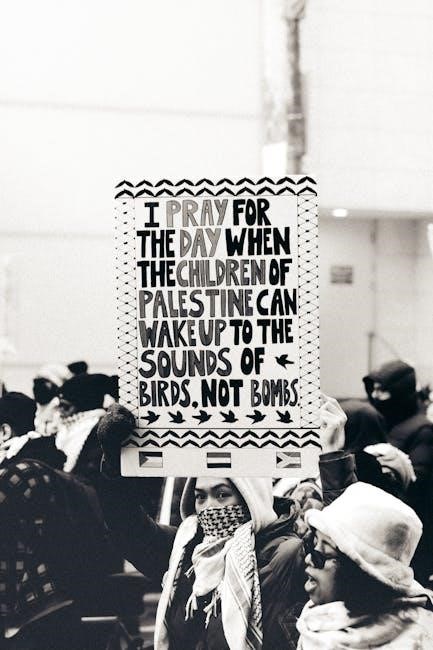
Joe Sacco’s Palestine masterfully employs visual storytelling to convey the complexities of life under occupation. His detailed, expressive illustrations capture the emotional depth of individual experiences, transforming abstract political issues into relatable human narratives. Sacco’s artwork immerses readers in the environments of Gaza and the West Bank, from cramped refugee camps to bustling markets, creating a vivid sense of place. The interplay between text and image amplifies the emotional impact, allowing readers to connect deeply with the stories of those he interviews. Sacco’s visual style, often raw and unflinching, underscores the harsh realities of daily life while maintaining a level of intimacy and empathy. This fusion of journalism and art ensures that the voices and faces of Palestinians are not merely documented but vividly brought to life, leaving a lasting impression on the reader; His approach sets a benchmark for the potential of comics journalism to engage and enlighten audiences.
3.3. The Intersection of Journalism and Comic Art
Joe Sacco’s Palestine exemplifies the innovative fusion of journalism and comic art, redefining how stories about conflict and human rights can be told. By blending meticulous research with personal narratives, Sacco creates a unique form of storytelling that is both informative and deeply engaging. His work transcends traditional journalism by using the visual medium of comics to convey the emotional and psychological complexities of life under occupation. The interplay between text and image allows readers to connect with the stories on a visceral level, making the realities of the Israeli-Palestinian conflict accessible and relatable. Sacco’s approach challenges the boundaries of both journalism and comics, demonstrating how the combination of these disciplines can amplify the impact of a story. This hybrid form not only educates but also humanizes the individuals caught in the conflict, ensuring their voices are heard and remembered. Sacco’s pioneering work has set a new standard for comics journalism.

Reception and Impact of the Book
Joe Sacco’s Palestine received widespread critical acclaim, earning the 1996 American Book Award. Its raw, honest portrayal resonated deeply with readers, reshaping perceptions of the Israeli-Palestinian conflict.
4.1. Critical Acclaim and Awards
Joe Sacco’s Palestine has garnered significant critical acclaim and prestigious awards. The graphic novel earned Sacco the 1996 American Book Award, recognizing its profound impact and literary excellence. Critics and scholars have praised its nuanced storytelling, blending journalism with comic art to convey the harrowing realities of the Israeli-Palestinian conflict. The book’s ability to humanize the Palestinian experience through detailed visuals and personal narratives has been widely commended. Its innovative approach to comics journalism has set a benchmark in the field, influencing both literary and academic discourse. The acclaim underscores Sacco’s mastery in capturing complex political and social dynamics, making Palestine a seminal work in contemporary graphic non-fiction. Its recognition continues to highlight the importance of such works in fostering empathy and understanding of global conflicts.
4.2. Audience Reception and Reviews
Palestine has resonated deeply with readers, earning widespread admiration for its raw honesty and emotional depth. Many audiences have praised the book for its ability to humanize the Palestinian experience, offering a personal and intimate perspective often overlooked in mainstream media. Readers have described it as a life-changing work that challenges preconceived notions about the Israeli-Palestinian conflict. The graphic novel’s vivid storytelling and Sacco’s empathetic approach have fostered a strong emotional connection with readers, many of whom have highlighted its ability to evoke empathy and understanding. While some critics have noted the complexity of the subject matter, the majority of reviews emphasize the book’s accessibility and its power to educate. The inclusion of personal anecdotes, such as Sacco’s interactions with Palestinians on pages 161-162, further underscores its relatability. Overall, Palestine has left a lasting impact on its audience, sparking meaningful discussions and reflections on the conflict’s human cost.
4.3. Controversies and Criticisms
Joe Sacco’s Palestine has sparked controversy, with some critics accusing him of bias toward the Palestinian narrative. Detractors argue that his work often focuses on Palestinian suffering while minimizing Israeli perspectives, leading to accusations of selective storytelling. Some have criticized his portrayal of Israelis as overly negative, suggesting it lacks nuance. Additionally, Sacco’s blending of journalism and advocacy has raised debates about objectivity, with critics claiming his emotional engagement with the subject compromises journalistic neutrality. Despite these criticisms, supporters argue that Palestine provides a necessary counterbalance to dominant media narratives, emphasizing underreported Palestinian experiences. The book has also faced scrutiny for its graphic content, which some find disturbing. These debates highlight the challenges of representing complex conflicts in a medium that blends art and journalism, underscoring the polarized reactions to Sacco’s work.

Comparisons with Other Works by Joe Sacco
Joe Sacco’s Palestine stands out as his most celebrated work, blending cartography and emotional storytelling. Unlike Safe Area Goražde, it focuses solely on the Israeli-Palestinian conflict, offering unparalleled depth and personal narratives.
5.1. Similarities with Safe Area Goražde
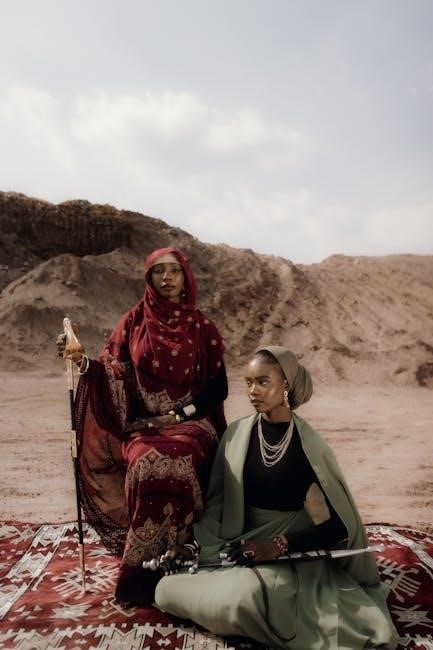
Joe Sacco’s Palestine and Safe Area Goražde share striking similarities in their thematic focus on conflict zones and human suffering. Both works employ Sacco’s signature comics journalism style, blending personal narratives with detailed, evocative visuals to convey the emotional and political complexity of war-torn regions. Like Goražde, Palestine immerses readers in the daily struggles of civilians, offering a deeply human perspective on broader geopolitical issues. Both books also highlight Sacco’s ability to balance journalistic objectivity with empathetic storytelling, creating a sense of intimacy and immediacy. The visual detail in both works is meticulous, serving as a form of documentation that complements the textual narratives. This approach has solidified Sacco’s reputation as a pioneer in the genre, with both books receiving critical acclaim for their unique blend of journalism and artistry. Their shared themes and styles underscore Sacco’s commitment to giving voice to marginalized communities.
5.2. Contrasts with Footnotes in Gaza
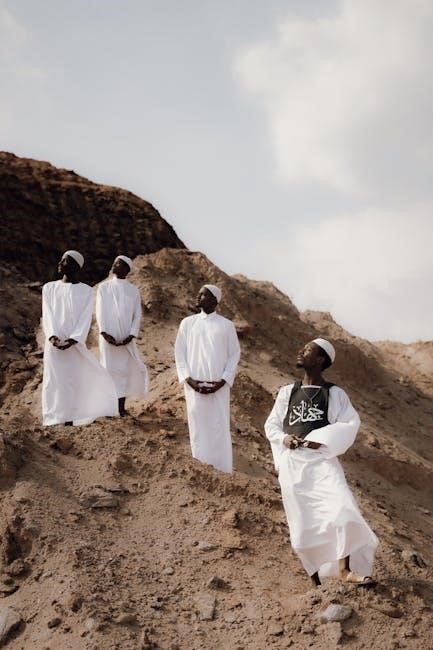
While both Palestine and Footnotes in Gaza by Joe Sacco explore the Israeli-Palestinian conflict, there are notable differences in their focus and narrative approach. Footnotes in Gaza, published in 2009, delves into specific historical events, such as the 1956 Khan Younis massacre, providing a more narrowly focused historical narrative. In contrast, Palestine (1996) offers a broader, anecdotal portrayal of daily life under occupation during the First Intifada. The tone of Footnotes is more somber and reflective, while Palestine is marked by its raw immediacy and personal encounters. Visually, Footnotes features denser, more detailed artwork, reflecting its historical depth, whereas Palestine relies on simpler yet expressive visuals to convey emotional intimacy. These contrasts highlight Sacco’s evolving style and his ability to adapt his storytelling to different aspects of the conflict, showcasing his versatility as a comics journalist. Both works, however, remain deeply humanistic in their approach.
5.3. Evolution of Sacco’s Style
Joe Sacco’s artistic and narrative style has evolved significantly over his career, with Palestine marking a pivotal moment in his development as a comics journalist. His earlier work often featured bold, stark visuals, while Palestine introduced a more refined, detailed approach to storytelling. The use of black-and-white imagery in Palestine creates a haunting, documentary-like feel, emphasizing the harsh realities of life under occupation. In later works, such as Footnotes in Gaza, Sacco’s art becomes even more intricate, with layered compositions that reflect the complexity of historical narratives. His ability to balance visual storytelling with textual depth has grown, allowing for a more immersive reader experience. This evolution underscores Sacco’s commitment to innovation in comics journalism, making his work a benchmark for the medium. His style continues to influence both visual storytelling and journalistic practices globally.
Palestine remains a landmark work in comics journalism, offering a deeply personal and unflinching portrayal of life under occupation. Its legacy lies in its ability to humanize the Palestinian experience, challenging dominant narratives and inspiring new approaches to visual storytelling. Through its vivid imagery and heartfelt accounts, Sacco’s work continues to resonate, fostering empathy and sparking critical discussions about justice and humanity. As a testament to the power of graphic narratives, Palestine endures as a vital contribution to both literary and political discourse, ensuring its relevance for future generations.
6.1. The Enduring Relevance of Palestine
Palestine by Joe Sacco remains a timeless and powerful narrative, offering a deeply personal and unflinching portrayal of life under occupation. Its enduring relevance stems from its ability to humanize the Palestinian experience, challenging dominant narratives and inspiring new approaches to visual storytelling. Through its vivid imagery and heartfelt accounts, Sacco’s work continues to resonate, fostering empathy and sparking critical discussions about justice and humanity. As a testament to the power of graphic narratives, Palestine endures as a vital contribution to both literary and political discourse, ensuring its relevance for future generations. The book’s nuanced depiction of the Israeli-Palestinian conflict through the eyes of those affected continues to educate and provoke, making it an essential read in understanding the complexities of the region. Its impact is undeniable, solidifying its place as a cornerstone of comics journalism and a powerful tool for social change.
6.2. Influence on Comics Journalism
Joe Sacco’s Palestine has profoundly influenced the field of comics journalism, redefining how visual storytelling can convey complex social and political issues. By blending meticulous research with personal narratives, Sacco set a new standard for the medium, inspiring countless cartoonists and journalists to explore similar approaches. His work demonstrated that comics could serve as a powerful tool for investigative journalism, combining the intimacy of personal stories with the depth of reportage. The book’s success legitimized graphic narratives as a serious medium for addressing global conflicts and human rights issues. Many credit Sacco with popularizing the term “comics journalism,” paving the way for others to use the format to explore socially conscious themes. His innovative style and commitment to truth-telling have made Palestine a benchmark for the genre, ensuring its influence continues to resonate in contemporary media and storytelling.
6.3. The Book’s Place in Contemporary Discourse
Palestine by Joe Sacco remains a pivotal work in contemporary discourse on the Israeli-Palestinian conflict, offering a nuanced and empathetic portrayal of life under occupation. Its unflinching depiction of daily struggles, combined with Sacco’s unique visual storytelling, has made it a cornerstone of discussions on human rights and journalism. The book’s ability to humanize the Palestinian experience has challenged dominant narratives, sparking conversations about representation and media bias. As a work of cartographic journalism, it bridges the gap between reportage and art, providing readers with a deeper understanding of the conflict’s complexities. With its enduring relevance, Palestine continues to be a vital resource for educators, activists, and anyone seeking a more informed perspective on the region. Its influence extends beyond academia, resonating in public debates and inspiring new generations of journalists and artists to explore similar themes. Through its honest and vulnerable lens, Palestine remains an essential text in fostering empathy and critical thinking about global issues.